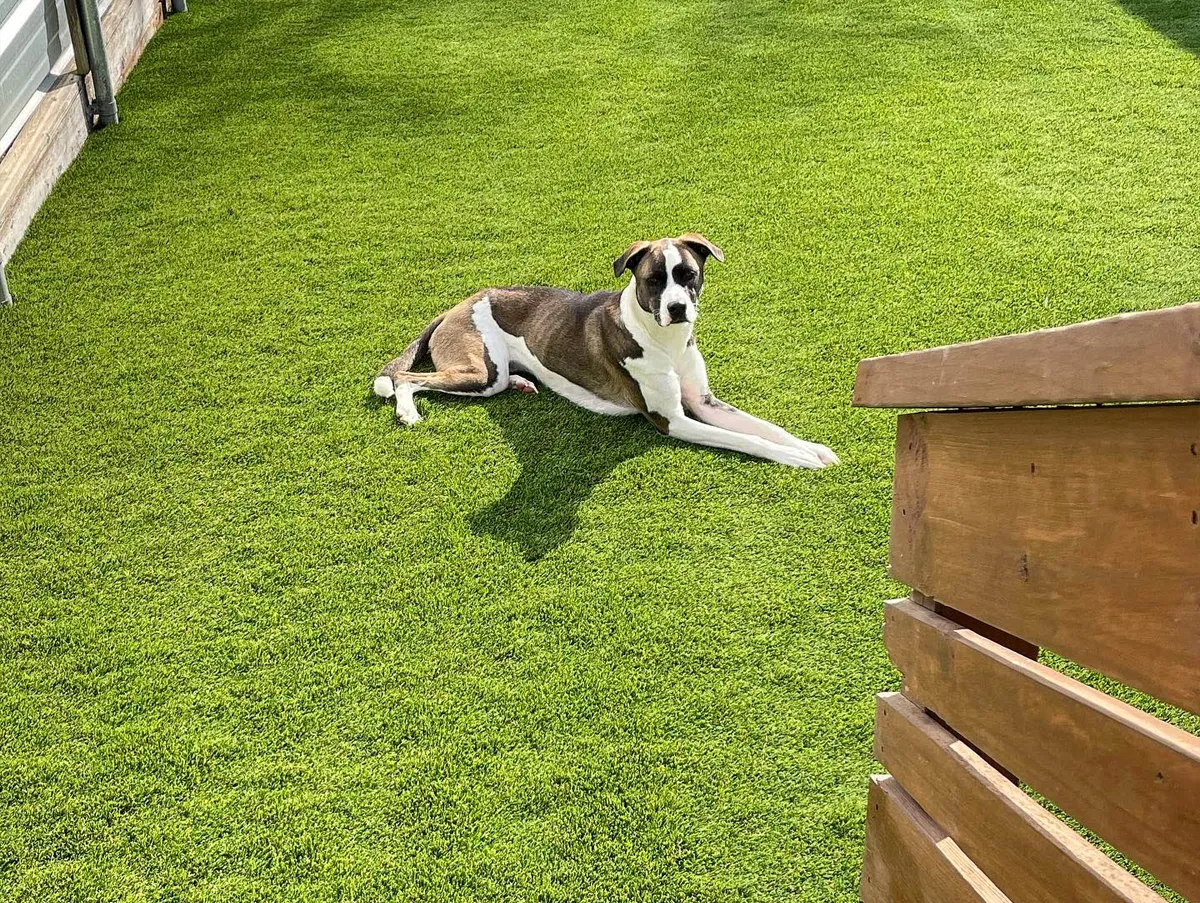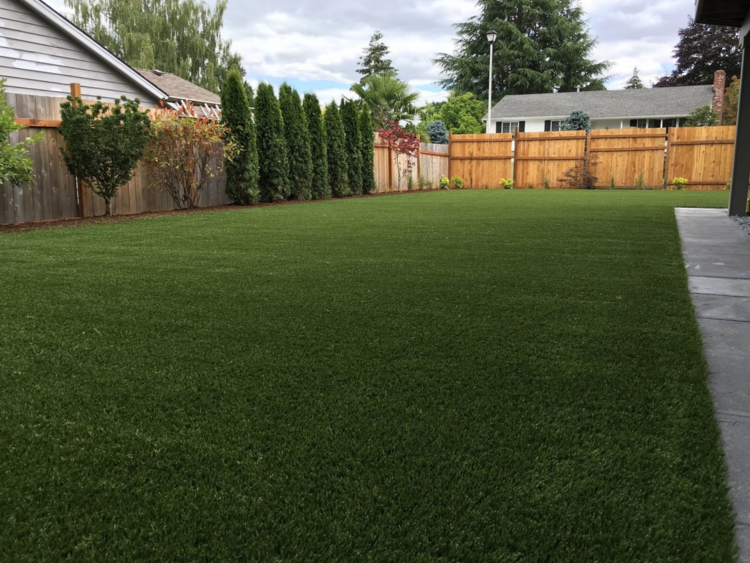Cost-Effective Turf Installation Phoenix AZ for a Hassle-Free Lawn Solution
Cost-Effective Turf Installation Phoenix AZ for a Hassle-Free Lawn Solution
Blog Article
Delve Into the Environmental Perks of Opting for Artificial Lawn Solutions
The fostering of synthetic grass options presents an engaging possibility to attend to pushing ecological challenges. By considerably decreasing water use and minimizing the application of hazardous chemicals, these options not only advertise sustainable landscaping but also protect neighborhood ecosystems. Furthermore, the lower carbon impact connected with lowered maintenance tasks contributes to a much more lasting technique to land management. Nonetheless, the effects of these advantages expand beyond plain preservation efforts, elevating concerns about their long-term influence on environment conservation and total environmental balance. Checking out these measurements exposes an intricate interaction worth considering.
Water Conservation Perks
One of the most substantial benefits of fabricated lawn is its ability to conserve water. In comparison, fabricated grass does not need watering, considerably decreasing the total need for water resources.
By eliminating the requirement for normal watering, man-made grass adds to sustainable landscape methods and helps mitigate the environmental effect of excessive water consumption. Additionally, the preservation of water encompasses the decrease of drainage, which can lead to soil erosion and river contamination.
Additionally, the installation of synthetic grass enables districts and house owners to allocate water sources more effectively, concentrating on necessary usages such as alcohol consumption water and farming. The change in the direction of synthetic grass not only advertises responsible water use but also lines up with wider ecological goals intended at protecting natural deposits.
As communities increasingly focus on sustainability, the water preservation advantages of synthetic grass present a compelling situation for its adoption in residential and business landscaping tasks.
Minimized Chemical Use
The change to artificial lawn dramatically lowers the dependence on chemical therapies commonly utilized in natural lawn upkeep. Traditional lawn administration commonly involves the application of pesticides, plant foods, and herbicides to advertise growth and control parasites. These chemicals can position dangers to human health and wellness, neighborhood wildlife, and the environment, adding to soil and water contamination.
In comparison, man-made grass eliminates the demand for these damaging materials. By minimizing the release of artificial compounds into the environment, man-made grass advertises healthier soil and water systems.
Additionally, the absence of chemical drainage connected with fabricated turf installments aids protect regional rivers from pollution, supporting aquatic life and keeping biodiversity. Arizona artificial turf. As communities increasingly focus on lasting practices, choosing synthetic grass offers a viable option that aligns with environmental conservation goals. With this change, homeowner can enjoy lush environment-friendly rooms without jeopardizing eco-friendly wellness, leading the way for a more sustainable future
Lower Carbon Impact

Moreover, the setup of synthetic grass can lead to considerable water conservation. All-natural lawns call for considerable quantities of water for irrigation, which not only contributes to the carbon footprint connected with water extraction and treatment however likewise stress local water resources. On the other hand, artificial turf needs very little maintenance, needing no watering, consequently dramatically reducing water use and its associated energy costs.
Additionally, the durability of synthetic turf adds to its decreased carbon influence. With a life-span of approximately 15 years or even more, the requirement for frequent replacements is reduced, leading to much less waste and reduced energy consumption in production and taking care of wikipedia reference traditional turf options. Generally, synthetic lawn offers a lasting option for eco mindful landscaping.
Environment Preservation
Environment preservation is a crucial consideration in the dispute over landscape here design choices, particularly when comparing synthetic turf to natural lawn. All-natural lawn yards often call for substantial maintenance, consisting of the usage of herbicides, pesticides, and plant foods, which can negatively affect regional ecological communities. These chemicals can leach into the dirt and rivers, damaging indigenous vegetation and animals and interfering with local environments.
Artificial lawn gets rid of the demand for hazardous chemicals, thus safeguarding close-by wildlife and maintaining the integrity of surrounding ecological communities. The installation of synthetic turf can lead to the conversion of previous grass areas into more biodiverse landscapes, such as pollinator yards or native plant locations, which can support local wild animals.
Inevitably, the change to man-made lawn not only preserves water and minimizes maintenance initiatives yet likewise cultivates a much more unified partnership in between human tasks and the native environment, promoting habitat preservation at the same time.
Long-Term Sustainability
Long-term sustainability is a crucial element in assessing the advantages of synthetic grass over traditional yard lawns. One of the most significant advantages of synthetic grass is its longevity; it can last up to 15-20 years with minimal maintenance, whereas natural turf calls for constant reseeding and replacement. This long life decreases the requirement for consistent sources, such as water, fertilizers, and chemicals, which are important for preserving a healthy turf lawn.
In addition, fabricated grass adds to a decrease in carbon discharges connected with yard care equipment. Traditional yards commonly require gas-powered lawn mowers, trimmers, and blowers, all of which add to air contamination. Artificial turf companies phoenix. On the other hand, man-made turf eliminates the requirement for such equipment, advertising a cleaner atmosphere
Furthermore, the production of synthetic grass significantly uses recycled materials, boosting its sustainability profile. As manufacturers take on green techniques, the environmental impact of synthetic grass proceeds to decrease.

Verdict
The fostering of synthetic grass remedies provides considerable environmental benefits, including significant water conservation, decreased reliance on damaging chemicals, and a reduced carbon impact. In addition, fabricated lawn help in preserving natural habitats by reducing land disruption and promoting long-lasting sustainability through making use of sturdy products. Collectively, these variables underscore the possibility of fabricated grass to contribute positively to environmental health and wellness and provide a viable choice to standard landscaping methods in a progressively resource-conscious world.
In comparison, man-made turf does not require watering, considerably lowering the general need for water sources. By minimizing the launch of artificial compounds into the ecological community, man-made turf promotes healthier dirt and water systems.
Furthermore, the installation of artificial grass can result in significant water conservation. In contrast, artificial turf needs marginal maintenance, requiring no watering, consequently substantially decreasing water use and its associated power why not look here costs.

Report this page